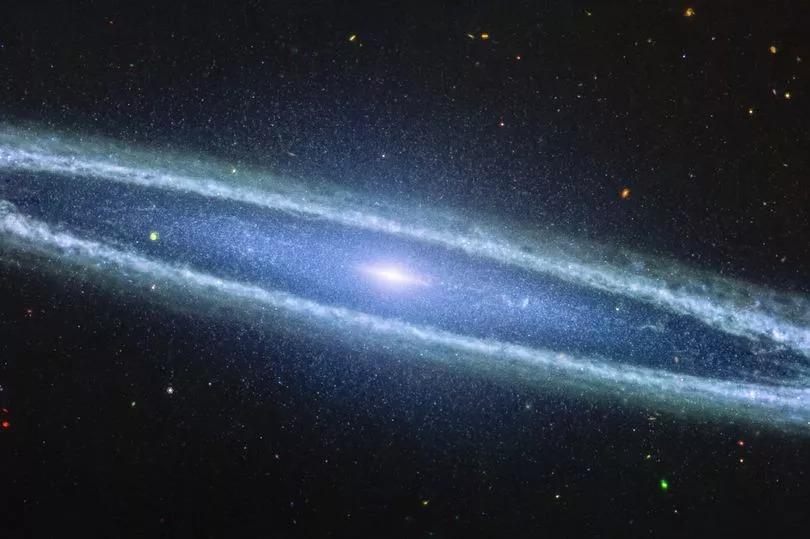
This new image from the James Webb Space Telescope shows a galaxy 30 million light-years from Earth in incredible detail. The still reveals the smooth inner disk in the signature, glowing core of the Sombrero galaxy, also known as Messier 104 (M104). The galaxy got its unusual name because when the Hubble Space Telescope snapped a photo of it 20 years ago, it resembled a hat with a brim.
The sharp resolution of Webb’s MIRI (Mid-Infrared Instrument) also brings into focus details of the galaxy’s outer ring, providing insights into how the dust, an essential building block for astronomical objects in the Universe, is distributed. The galaxy’s outer ring shows intricate clumps in the infrared for the first time. Researchers say the clumpy nature of the dust, where MIRI detects carbon-containing molecules called polycyclic aromatic hydrocarbons, can indicate the presence of young star-forming regions.
However, unlike some galaxies studied with Webb, including Messier 82, where 10 times as many stars are born as in the Milky Way galaxy, the Sombrero galaxy is not a particular hotbed of star formation. The rings of the Sombrero galaxy produce less than one solar mass of stars per year. In comparison, the Milky Way’s produces roughly two solar masses a year.
READ MORE: NASA is sending a spacecraft to an asteroid said to be worth quintillions
The supermassive black hole at the centre of the Sombrero galaxy, also known as an active galactic nucleus (AGN), is rather docile, even at a hefty 9-billion-solar masses. It’s classified as a low luminosity AGN, slowly snacking on infalling material from the galaxy, while sending off a bright, relatively small, jet.
Also within the Sombrero galaxy, is located in the constellation Virgo, dwell some 2000 globular clusters, a collection of hundreds of thousands of old stars held together by gravity. This type of system serves as a pseudo laboratory for astronomers to study stars – thousands of stars within one system with the same age, but varying masses and other properties is an intriguing opportunity for comparison studies.
In the MIRI image, galaxies of varying shapes and colours litter the background of space. The different colours of these background galaxies can tell astronomers about their properties, including how far away they are.
EMEA Tribune is not involved in this news article, it is taken from our partners and or from the News Agencies. Copyright and Credit go to the News Agencies, email news@emeatribune.com Follow our WhatsApp verified Channel





